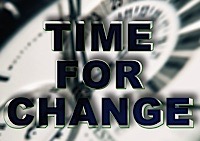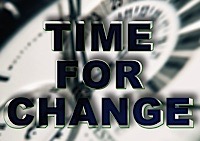 Flip open the next issue of GQ, and you'll find a full-page photograph of the classic rock band Heart beside Nobel laureates Elizabeth Blackburn and Phillip Sharp, equally decked out in rocker fashion. It's one image from a 6-page spread of rock stars mingling with scientists in the men's magazine with some 7 million readers, intended to help seal the growing gap between science and the public.
Flip open the next issue of GQ, and you'll find a full-page photograph of the classic rock band Heart beside Nobel laureates Elizabeth Blackburn and Phillip Sharp, equally decked out in rocker fashion. It's one image from a 6-page spread of rock stars mingling with scientists in the men's magazine with some 7 million readers, intended to help seal the growing gap between science and the public.
But some are less than optimistic. "If you are operating under the illusion that all scientists run around with pens and slide rulers in their lab coat pockets, then this campaign will say no, scientists look like ordinary people," said Jon Miller, director of the International Center for the Advancement of Scientific Literacy at Michigan State University. "But if you expect to ignite popular support for science with this campaign, I doubt that will happen."
innovation DAILY
Here we highlight selected innovation related articles from around the world on a daily basis. These articles related to innovation and funding for innovative companies, and best practices for innovation based economic development.
When University Commercialization Offices Turn Troll
 Bloomberg reports that the patent licensing office at the University of New Mexico has launched a lawsuit against Intel alleging infringement of a UNM patent for a process of making circuit boards.
Bloomberg reports that the patent licensing office at the University of New Mexico has launched a lawsuit against Intel alleging infringement of a UNM patent for a process of making circuit boards.
The lawsuit comes on the heels of rumoured successful negotiations by UNM with Samsung and Taiwan Seminconductor in respect of the same patent.
Come and share your expertise as we seek to resolve a series of complex technical problems!

- New contacts with individuals with complementary expertise
- New opportunities with firms that could benefit from your own expertise
- New technical ideas in line with the potential solutions you’re exploring
- Potentially valuable and useful discussions
- Concrete experience with open innovation
- Leaders of the Quebec City region’s main research centres (CEOs, CTOs,
- Business leaders working in sectors in which success depends on innovation
- Researchers, scientists, engineers and technologists whose work experience is in line with the
- Regional innovation stakeholders (financing, intellectual property, consultants, etc.)
- Frank Piller, professor of management at RWTH University (Aachen, Germany), co-director of
CIT RELEASES INNOVATION INDEX REPORTS
 A regional initiative to create a roadmap to Virginia’s innovation economy.
A regional initiative to create a roadmap to Virginia’s innovation economy.
HERNDON, Va. (November 17, 2010) – The Center for Innovative Technology (CIT) announced today the release of reports on the Commonwealth Innovation Index, the first comprehensive, long-term planning tool designed to foster the formation, retention, and expansion of technology-based economic development opportunities throughout the Commonwealth.
Established in 2008 by an Act of the Virginia General Assembly, the Innovation Index is a grassroots, community-driven tool that helps regional leaders look five to 15 years ahead for common economic opportunities in the form of industry clusters, and then identify and address barriers, or “gaps,” that may impede those opportunities. CIT, Virginia’s state-chartered nonprofit charged with accelerating innovation and technology, is working with the Commonwealth’s ten regional technology councils and other area leaders to advance the initiative.
Jeff Bezos of Amazon knows three things
Check out this video from Jeff Bezos of Amazon in which he distils his learnings from fifteen years at Amazon in three things – and he says it is a complete list. You need to watch the video (or at least the first six minutes of it) to really understand what he is trying to say, but here is the crib sheet for you to come back to afterwards.
1. Obsess over customers
2. Invent
3. Think long term (I like this one the most for the way he talks about needing the confidence to tolerate being misunderstood)
Don't Move To Pittsburgh
 Is your company looking for talent? Don't look at Pittsburgh. The region, as the editor of the Pittsburgh Post-Gazette once told the world, is suffering from acute brain drain:
Is your company looking for talent? Don't look at Pittsburgh. The region, as the editor of the Pittsburgh Post-Gazette once told the world, is suffering from acute brain drain:
If there's a road map to Rust Belt renaissance, a model of postindustrial success, it may be in Buffalo's one-time steelmaking soul mate, a city once described as hell with the lid off.
The leaders of the world's economic powers convened there Thursday for the two-day Group of 20 summit, prompting the question, "Why Pittsburgh?"
"It's a wonderful story of redemption, renewal and renaissance," said David M. Shribman, executive editor of the Pittsburgh Post-Gazette.
Ten Ways for an Entrepreneur to Expand His Reach
 As an entrepreneur, you always need to be on the lookout for ways to expand your current business, and always on the lookout for your next big thing. The competition never stands still, and new opportunities are evolving, based on culture changes in your customers, new technologies, and new problems in the world which need to be solved.
As an entrepreneur, you always need to be on the lookout for ways to expand your current business, and always on the lookout for your next big thing. The competition never stands still, and new opportunities are evolving, based on culture changes in your customers, new technologies, and new problems in the world which need to be solved.
Steven Schussler, in his new book “It’s a Jungle In There” characterized this well in relation to his own success by recommending to all entrepreneurs that you observe the world around you and make a consistent, conscious effort to ask yourself: “Is there something here I could change (by providing a service or product) that would bring me financial gain?”
He provides several examples of how he used this approach to advantage in his own career. I’ve netted out his and others to create the following basic strategy for entrepreneurial growth:
- Apply your core competency to related markets. Look for competitors that have the same capabilities as you in a different market area, or for different customers. By utilizing economies of scale, location, and common design, you may be able to provide a better solution faster for a lower cost.
Guest Columnist: Incubators spur growth
 In today's economy, early stage innovators from all walks of business could use a little help getting organized and getting ahead. But is it possible to get it all in one place? What sort of business operation can meet the demand of early stage innovators seeking such business development assistance?
In today's economy, early stage innovators from all walks of business could use a little help getting organized and getting ahead. But is it possible to get it all in one place? What sort of business operation can meet the demand of early stage innovators seeking such business development assistance?
It was from this inquiry that the idea of a business incubator was born. As a matter of fact, according to a 2008 Rochester Business Journal article, the business incubator concept was created right here in New York state. It was started by a man named Joseph Mancuso, whose business development group started in a warehouse in Batavia. The group has since spawned several incubator companies under the umbrella of the Mancuso Business Development Corp., a founding member of the Business Incubator Association of New York State.
Invest in Lines, not Dots
 Everyone seems to be in such a rush to get shacked up these days.
Everyone seems to be in such a rush to get shacked up these days.
In normal times investors will look for “traction” before investing. We want to make sure we’re in love. This sometimes frustrates entrepreneurs who just want to “get back to running the business.” But if you understand it you’ll see that it is perfectly rational and it should also influence how you form relationships with investors. And remember, if we get married you’re stuck with us, too.
Many Want to Learn More About Measuring for Innovation
 Clearly there is a great need to learn more about establishing innovation measurement programs. The topic of the workshop “ Measuring for Innovation”, held in Stockholm on November 10th, attracted participants from major multinational companies as well as guests from the Chinese embassy in Stockholm.
Clearly there is a great need to learn more about establishing innovation measurement programs. The topic of the workshop “ Measuring for Innovation”, held in Stockholm on November 10th, attracted participants from major multinational companies as well as guests from the Chinese embassy in Stockholm.
A poll among the participants showed that roughly 70 percent of the organizations represented did not measure innovation explicitly. And less than one percent had a complete measurement program.
Åsa Norrby, Innovation Development Leader from Volvo CE (Construction Equipment) was very interested in learning more about how to measure for innovation:
- At Volvo CE we are very interested in developing our innovation capabilities and knowing how to measure our work is of course a very important factor. I really enjoyed the workshop discussions. It´s interesting to exchange ideas and it seems like a lot of us are dealing with the same kinds of challenges.
Small Business Guide to Cloud Computing
 Let’s start with defining cloud computing. Cloud computing can simply be defined as a computing model in which services (e.g. web based email) and storage (e.g. web hosting) are provided over the Internet.
Let’s start with defining cloud computing. Cloud computing can simply be defined as a computing model in which services (e.g. web based email) and storage (e.g. web hosting) are provided over the Internet.
When most small business owners or new software companies talk about cloud computing, they usually mean an application that runs from the web and not directly from your not-connected-to-the-Internet desktop (software as a service or SaaS).
Cloud computing software solutions, for our purposes here, mean software that has a low monthly fee rather than a one-time capital expenditure.
How Much Money do Small Business Owners Make?
 Many people are curious about what the average small business owner earns. The IRS Statistics of Income provides some data on the average income of sub chapter S corporations and sole proprietorships, which helps to estimate small business owners’ earnings.
Many people are curious about what the average small business owner earns. The IRS Statistics of Income provides some data on the average income of sub chapter S corporations and sole proprietorships, which helps to estimate small business owners’ earnings.
In the table below, I show the income and sales of the average sub chapter S Corporation in the latest year the data are available. The figure shows that the average S corp generated about $100,000 income on about $1.5 million in sales in the last year before the Great Recession.
Older Professors: Fewer, and Better, Than You Think
 A frequent reader of The Chronicle might conclude that our universities are haunted by the specter of a campus clogged with geriatric professors waving canes in one hand and tattered lecture notes in the other. There seems to be a widespread assumption that junior faculty are productive and engaged, and senior faculty are nonproductive and disengaged. We—those of us 50 and above—are criticized for consuming excessive salaries, held responsible for the alarming rise in the costs of health insurance, viewed as dull and obsolete, and condemned for blocking the careers of more dynamic, and younger, faculty.
A frequent reader of The Chronicle might conclude that our universities are haunted by the specter of a campus clogged with geriatric professors waving canes in one hand and tattered lecture notes in the other. There seems to be a widespread assumption that junior faculty are productive and engaged, and senior faculty are nonproductive and disengaged. We—those of us 50 and above—are criticized for consuming excessive salaries, held responsible for the alarming rise in the costs of health insurance, viewed as dull and obsolete, and condemned for blocking the careers of more dynamic, and younger, faculty.
The dire implications of an aging faculty preoccupy a lot of academic pundits. A recent essay in The Chronicle Review argued that "retirement is central to the renewal of the American university" and went on to urge us to "make a timely retirement alluring" by inspiring faculty to "envision their retirement." More pointedly, the economist Paul Romer told Arnold Kling and Nick Schulz, authors of the 2009 book From Poverty to Prosperity, "If we are not careful, we could let ... things like tenure and hierarchical structures and peer review slowly morph over time so that the old guys control more and more of what's going on and the young people have a harder and harder time doing something really different, and that would be a bad thing for these processes of growth and change."
Employee Equity: Vesting
 We had a bunch of questions about vesting in the comments to last week’s MBA Mondays post. So this post is going to be about vesting.
We had a bunch of questions about vesting in the comments to last week’s MBA Mondays post. So this post is going to be about vesting.
Vesting is the technique used to allow employees to earn their equity over time. You could grant stock or options on a regular basis and accomplish something similar, but that has all sorts of complications and is not ideal. So instead companies grant stock or options upfront when the employee is hired and vest the stock over a set period of time. Companies also grant stock and options to employees after they have been employed for a number of years. These are called retention grants and they also use vesting.
Vesting works a little differently for stock and options. In the case of options, you are granted a fixed number of options but they only become yours as you vest. In the case of stock, you are issued the entire amount of stock and you technically own all of it but you are subject to a repurchase right on the unvested amount. While these are slightly different techniques, the effect is the same. You earn your stock or options over a fixed period of time.
Peter Thiel, Facebook’s first big backer, thinks the future of global innovation may hinge on more entrepreneurial college drop-outs
 I had a chance to spend some time on the phone yesterday with Peter Thiel, the PayPal co-founder, venture capitalist, hedge fund manager — and early Facebook investor. He’s speaking at MIT this coming Tuesday night, at an event organized by the MIT Enterprise Forum of Cambridge.
I had a chance to spend some time on the phone yesterday with Peter Thiel, the PayPal co-founder, venture capitalist, hedge fund manager — and early Facebook investor. He’s speaking at MIT this coming Tuesday night, at an event organized by the MIT Enterprise Forum of Cambridge.
We talked about Thiel’s new fellowship program, which will provide twenty $100,000 grants to potentially world-changing young entrepreneurs in the for-profit and non-profit sectors; why it might be better for would-be entrepreneurs to drop out of school today than it was when he attended Stanford; whether Facebook could have thrived if it had stayed in Boston; what Thiel sees as a dearth of innovation globally; and the risk tolerance of Boston investors.
Singapore To Improve Entrepreneurship Programs In Schools
 This is why youths should be encouraged to strike out on their own when they are still young.
This is why youths should be encouraged to strike out on their own when they are still young.
Youths below 26 years old are less likely to be held back from entrepreneurship because of fear of losing their income and jobs. This makes them a key target segment to be entrepreneurs, according a recent motivation survey conducted by the Action Community for Entrepreneurship or ACE.
The survey found that 26% of youths below 26 years old strongly agree that fear of losing their income and jobs is a key barrier to entrepreneurship.
This percentage rises to 35% for those aged 26 – 30, and 44% for those aged 31 – 35. The survey also found that youths are more likely to be inspired by successful entrepreneurs, with 75% of 267 young respondents agreeing with the statement.
Smart grids could save Europe €52bn
 Smart grids could save the EU €52 billion annually, according to leading smart grid companies that have teamed up to promote European leadership in smart grids.
Smart grids could save the EU €52 billion annually, according to leading smart grid companies that have teamed up to promote European leadership in smart grids.
The sizeable savings would arise from reducing losses in the electricity distribution network through automation and encouraging consumers to cut energy consumption with smart meters that provide more accurate and timely information, experts from the Smart Energy Demand Coalition said at its launch yesterday (15 November) in Brussels.
Utilities will also be able to lower the system voltage level and make meter-reading redundant, argued Chris King, chief regulatory officer at eMeter. After deducting necessary costs like the installation of smart meters and new software, the net benefit would still be €31 billion per year, he said.
The Two Cultures
 Many of the psychologists, artists and moral philosophers I know are liberal, so it seems strange that American liberalism should adopt an economic philosophy that excludes psychology, emotion and morality.
Many of the psychologists, artists and moral philosophers I know are liberal, so it seems strange that American liberalism should adopt an economic philosophy that excludes psychology, emotion and morality.
Yet that is what has happened. The economic approach embraced by the most prominent liberals over the past few years is mostly mechanical. The economy is treated like a big machine; the people in it like rational, utility maximizing cogs. The performance of the economic machine can be predicted with quantitative macroeconomic models.
These models can be used to make highly specific projections. If the government borrows $1 and then spends it, it will produce $1.50 worth of economic activity. If the government spends $800 billion on a stimulus package, that will produce 3.5 million in new jobs.
More Professors Give Out Hand-Held Devices to Monitor Students and Engage Them
 EVANSTON, Ill. — If any of the 70 undergraduates in Prof. Bill White’s “Organizational Behavior” course here at Northwestern University are late for class, or not paying attention, he will know without having to scan the lecture hall.
EVANSTON, Ill. — If any of the 70 undergraduates in Prof. Bill White’s “Organizational Behavior” course here at Northwestern University are late for class, or not paying attention, he will know without having to scan the lecture hall.
Their “clickers” will tell him.
Every student in Mr. White’s class has been assigned a palm-size, wireless device that looks like a TV remote but has a far less entertaining purpose. With their clickers in hand, the students in Mr. White’s class automatically clock in as “present” as they walk into class.
They then use the numbered buttons on the devices to answer multiple-choice quizzes that count for nearly 20 percent of their grade, and that always begin precisely one minute into class. Later, with a click, they can signal to their teacher without raising a hand that they are confused by the day’s lesson.

 The New York Times
The New York Times